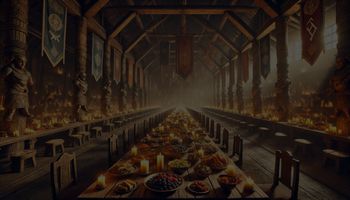
The Gods
Each spice blend is more than flavor—it is a god, a story, a gateway to distant lands. Discover their emblems, trace their origins, and let their tales ignite your next great adventure.

Aegir is a powerful sea jötunn, known for his deep connection to the ocean and his ability to control the tides and storms. Unlike other giants, he was friendly toward the gods and often hosted them in his grand hall beneath the waves. He was a master brewer, and his legendary feasts were said to serve the finest ale, which never ran dry. However, Aegir’s dual nature made him both a generous host and a fearsome force, as he could also bring destruction to sailors with towering waves and merciless tempests. His wife, Ran, and their nine daughters, who personified the waves, further solidified his dominion over the sea.
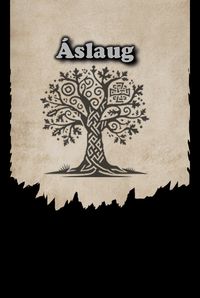
Áslaug was the daughter of the legendary dragon-slayer Sigurd and the shieldmaiden Brynhildr, yet her early life was spent in hiding. Raised in secrecy by a poor family, she was eventually revealed to be of noble blood and became the wife of Ragnar Lothbrok, one of the most famous Viking kings. Unlike other queens of legend, Áslaug was not only beautiful but also incredibly intelligent and gifted with foresight. She played a crucial role in guiding Ragnar and later ensured that their sons, including Ivar the Boneless and Bjorn Ironside, became powerful leaders. Her story highlights the importance of wisdom and cunning in Viking society, proving that strength was not only measured by the sword.
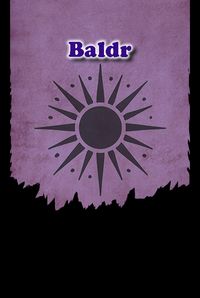
Baldr, the god of light and purity, was beloved by all in Asgard for his beauty, wisdom, and kindness. His mother, Frigg, was so fearful of his death that she made every object in the world swear never to harm him—except for mistletoe, which seemed too insignificant to be a threat. Loki, ever the trickster, exploited this oversight and orchestrated Baldr’s death, using the blind god Höðr to strike him with a mistletoe-tipped spear. His death sent shockwaves through the realm of the gods, as it was the first true sign that Ragnarok, the end of the world, was inevitable. Despite attempts to bring him back from Hel’s domain, Baldr remained in the underworld, destined to return only after the final battle had reshaped the world.
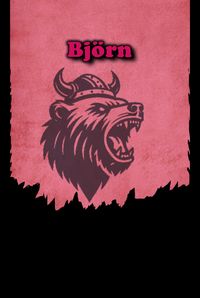
Bjorn Ironside was a legendary Viking warrior and son of the famous Ragnar Lothbrok. His nickname, "Ironside," came from the belief that no weapon could pierce his skin, making him seemingly invincible in battle. He was one of the greatest explorers of his time, leading raids as far as the Mediterranean, plundering rich cities, and carving out a name for himself in Viking history. A master tactician, he once tricked the defenders of a heavily fortified city by faking his own death, only to spring to life and lead his warriors to victory once inside. His legacy continued through his descendants, who ruled over powerful Viking territories long after his death.
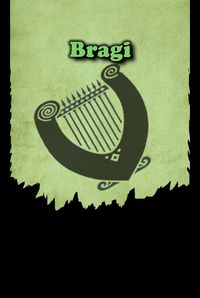
Bragi was the god of poetry, music, and eloquence, often depicted as a wise, bearded figure with a harp in hand. He was the master of words, weaving tales that honored the deeds of heroes and gods alike. His deep knowledge of history and storytelling made him a central figure in Valhalla, where he welcomed fallen warriors with verses of their past glories. Married to Idunn, the keeper of the apples of youth, Bragi was forever wise and never aged, his words carrying the weight of countless generations. His role in Norse mythology emphasized the Viking appreciation for storytelling, proving that a legacy could be carried through song and poetry as much as through battle.
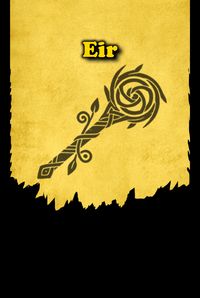
Eir was a goddess associated with healing and medicine, one of the most skilled practitioners of divine magic in Norse mythology. She was often called upon in times of illness and injury, guiding those in need toward powerful remedies and cures. Some myths describe her as one of the handmaidens of Frigg, while others place her among the Valkyries, suggesting she had a role in choosing which warriors would survive the battlefield. Unlike many Norse deities associated with war and destruction, Eir symbolized mercy and the preservation of life, making her an essential yet often overlooked figure. Her presence reminds us that even in a culture of warriors, healing and wisdom were just as vital as strength and bravery.
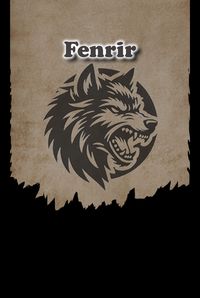
Fenrir is the monstrous wolf, the child of Loki and the giantess Angrboda, destined to play a key role in Ragnarok. As a pup, he was raised in Asgard, but his immense strength and rapid growth terrified the gods. They attempted to bind him in chains, but only the magical ribbon Gleipnir, crafted from impossible things like the sound of a cat’s footsteps and the roots of a mountain, could hold him. In his fury, he bit off the hand of the god Týr, who had tricked him into submission. At Ragnarok, Fenrir will break free, devour Odin himself, and be slain only by Odin’s son, Víðarr, in a final act of vengeance.
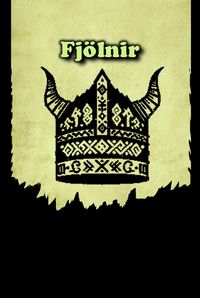
Fjölnir is a semi-legendary Norse king, said to be a son of Freyr and the founder of the Yngling dynasty. His rule was marked by prosperity and the blending of divine and mortal leadership, making him an important figure in Scandinavian history. Ironically, his death was less glorious—he is said to have drowned in a vat of mead at a feast, a humorous yet fitting end for a ruler tied to fertility and abundance. Despite this, his descendants continued to shape the future of Nordic kingship. His story is a mix of grandeur and dark humor, a reflection of how fate could be both generous and unforgiving.
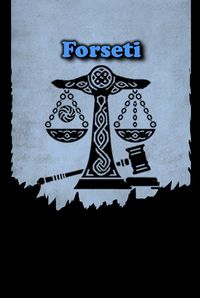
Forseti is the god of justice and reconciliation, known for his fairness and ability to settle disputes. He is the son of Baldr and Nanna, inheriting his father’s wisdom and kindness. Unlike other gods who favor strength in battle, Forseti values reason and diplomacy, and his golden hall, Glitnir, was a place where all legal disputes were settled peacefully. His judgments were so fair and binding that none could contest them, making him one of the most respected deities in Asgard. Though he does not play a major role in Ragnarok, his ideals of justice and order contrast sharply with the chaos that eventually consumes the gods.
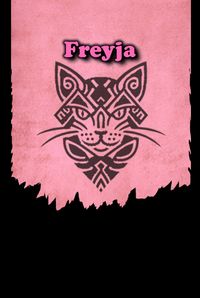
Freyja is the goddess of love, beauty, war, and magic, one of the most revered deities in Norse mythology. As a member of the Vanir, she was both a powerful sorceress and a fierce warrior, riding into battle on a chariot pulled by cats. She possessed the Brísingamen, a legendary necklace that symbolized her status and power, and she was known to weep tears of gold for her missing husband, Óðr. Half of all fallen warriors were taken to her hall, Fólkvangr, while the other half went to Odin’s Valhalla. Freyja was also a master of seiðr, a form of Norse magic that allowed her to see and shape fate, making her one of the most mysterious and formidable figures in the pantheon.
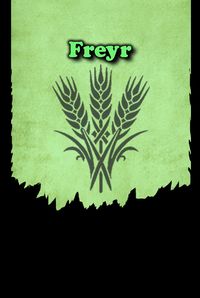
Freyr is one of the most beloved gods, associated with fertility, prosperity, and peace. He rules over the bountiful lands of Alfheim and is often depicted with his shining sword and a golden boar named Gullinbursti. Freyr is known for sacrificing his mighty sword to win the love of the giantess Gerðr, a choice that ultimately leaves him vulnerable at Ragnarok. Despite this, he remains a symbol of abundance and joy, representing the life-giving forces that sustain both gods and humans. His presence was invoked in harvest festivals, ensuring fruitful fields and the prosperity of those who worshipped him.
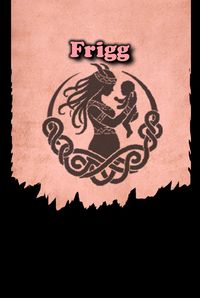
Frigg, the queen of Asgard, was the wife of Odin and the mother of Baldr, known for her wisdom and foresight. Unlike other goddesses, she had the power to see the future, though she never revealed what she knew. She was a goddess of marriage, motherhood, and fate, overseeing the well-being of families and the home. Her grief over Baldr’s death was unmatched, as she had tried to prevent it by making every living thing swear never to harm him—except for the fateful mistletoe. Despite her sorrow, she remained a powerful and regal figure, embodying the strength and wisdom of the divine feminine.
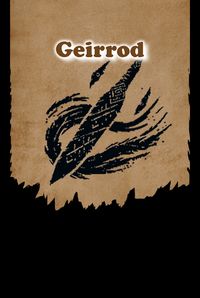
Geirrod is a ruthless and cunning giant known for his hatred of Thor and his cruel nature. Unlike many of his kin, he does not rely solely on brute strength but uses trickery and deceit to gain the upper hand. In one tale, he captures Loki and forces him to lure Thor into a deadly trap, hoping to defeat the god of thunder once and for all. However, with the help of a magical girdle, iron gloves, and an unbreakable staff gifted by the giantess Grid, Thor overcomes Geirrod’s treachery and slays him. Geirrod’s story serves as a reminder that intelligence and malice can be just as dangerous as raw power, but in the end, the gods’ strength and wisdom prevail.
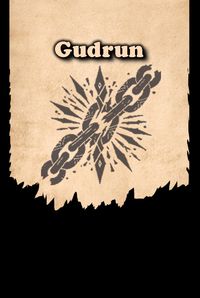
Gudrun is a tragic heroine in Norse legend, best known for her role in the Völsunga saga. She was the wife of the dragon-slayer Sigurd, but after his murder, she endured immense suffering, including forced marriage, betrayal, and the loss of her children. Despite the tragedies she faced, she became a figure of resilience and vengeance, ultimately taking part in the downfall of those who wronged her. Her story is one of sorrow, but also of survival and justice, reflecting the harsh realities of Viking life. Gudrun’s tale reminds us that even the strongest must endure hardship, but their legacy can shape the fate of kingdoms.
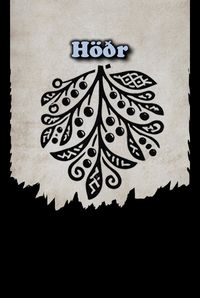
Höðr is the blind god of darkness and winter, whose tragic fate was orchestrated by Loki. Deceived into slaying his beloved brother Baldr with a mistletoe spear, he unknowingly became a pawn in the prophecy of Ragnarok. Though not inherently evil, his actions led to immense sorrow among the gods, and he was later slain in retribution by Vali, Odin’s avenging son. Despite his role in Baldr’s death, some stories suggest that Höðr will return after Ragnarok, reborn into a new world alongside his brother. His story serves as a reminder of how fate can be cruel, and even the gods are not free from destiny’s grasp.
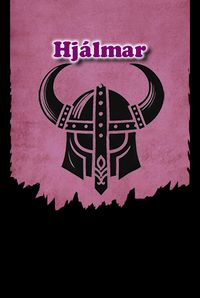
Hjálmar was a legendary warrior whose story is one of love, honor, and tragedy. He was known for his exceptional skill in battle and his unwavering loyalty to his beloved, Princess Ingibjörg. His greatest challenge came in a duel against Angantyr, a berserker wielding the cursed sword Tyrfing, which always demanded blood. Though Hjálmar fought valiantly, he was mortally wounded, dying with his love’s name on his lips. His story is a reminder of the Viking ideal—living and dying with honor, leaving behind a legacy of bravery and devotion.
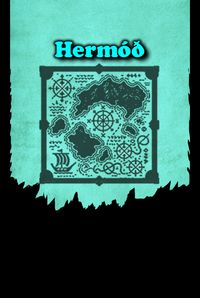
Hermóðr is the swift and courageous messenger of the gods, often depicted as one of Odin’s most trusted sons. His most famous journey was his ride to Helheim to plead for Baldr’s return after the beloved god was slain. Riding Sleipnir, Odin’s eight-legged horse, he braved the treacherous underworld, proving his bravery and determination. Though Hel agreed to release Baldr if all things wept for him, Loki’s interference doomed the attempt, forcing Hermóðr to return in failure. Despite this, he remains a symbol of perseverance, loyalty, and the willingness to face the unknown in the service of others.
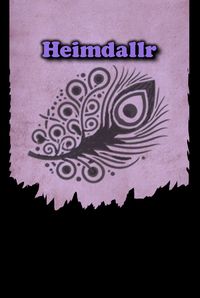
Heimdall is the ever-watchful guardian of the Bifröst, the rainbow bridge that connects Asgard to the other realms. He possesses extraordinary senses, able to hear grass growing and see for hundreds of miles, ensuring that no enemy approaches unnoticed. Born of nine mothers, he is an enigmatic figure, both wise and formidable, wielding the horn Gjallarhorn, which will sound at the beginning of Ragnarok. At the end of days, he will face his eternal rival, Loki, in a final battle where they will slay each other. Heimdall represents vigilance and duty, standing as the first and last defense of the gods.
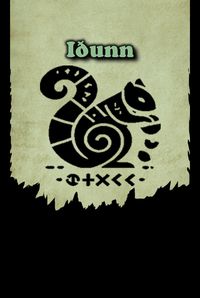
Iðunn is the goddess of youth and renewal, entrusted with the golden apples that keep the gods eternally young. She is a vital figure in Norse mythology, as the gods would age and weaken without her magic fruit. When she was once kidnapped by the giant Thjazi, the gods quickly began to wither, forcing Loki to rescue her before it was too late. Despite her seemingly passive role, Iðunn holds immense power, as the very vitality of the gods depends on her. Her presence symbolizes rejuvenation, reminding us that even in a world of war and fate, renewal is essential for survival.
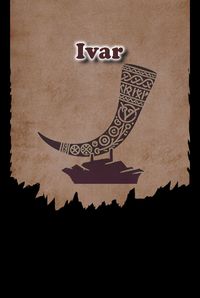
Ivar the Boneless is one of the most legendary Viking leaders, known for his cunning and ruthless tactics in battle. Despite his name, which suggests a physical disability, he overcame any limitations through sheer intellect and strategic brilliance. As a commander of the Great Heathen Army, he led invasions across England, striking fear into the hearts of his enemies. He is often portrayed as cold and calculating, using psychological warfare to outmaneuver his foes. His legacy is one of resilience and adaptation, proving that strength is not just in the body but in the mind.
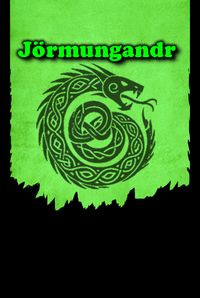
Jörmungandr, the World Serpent, is one of Loki’s monstrous children and a central figure in Ragnarok. Cast into the ocean by Odin, he grew so large that he encircled the entire world, biting his own tail. His greatest enemy is Thor, and their final battle is prophesied to end in mutual destruction—Thor will slay the serpent but will succumb to its venom shortly after. Jörmungandr represents chaos and the inevitable cycle of destruction and rebirth that defines Norse mythology. His presence looms over the gods as a reminder that no matter how powerful they are, their fate is sealed.
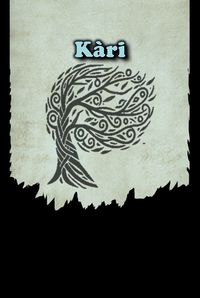
Kári is the god of the wind, often associated with the sky and the untamed forces of nature. He is one of the primordial beings in Norse mythology, descended from the frost giant Ymir, and is sometimes seen as a personification of the northern winds. His presence is both soothing and fearsome, carrying whispers of distant lands or raging with the fury of a storm. Though not as widely mentioned as Odin or Thor, he represents the unseen forces that shape the world, reminding Vikings of the power of the elements. In some traditions, he is considered a ruler of the air, guiding the winds that carried Norse ships across vast seas
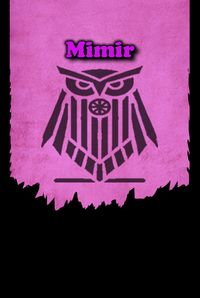
Mímir is the wise and enigmatic guardian of knowledge, often associated with the Well of Mímir, which grants unparalleled wisdom to those who drink from it. Odin, in his relentless pursuit of knowledge, sacrificed one of his eyes to gain a sip from the well, showing the immense value of Mímir’s wisdom. After the Aesir-Vanir war, Mímir was beheaded, but Odin preserved his head with magic, allowing it to continue speaking and offering counsel. He symbolizes the cost of wisdom, as true knowledge often demands great sacrifice. In Norse mythology, Mímir’s insight remains one of the most revered and mysterious forces, guiding the gods even after his death.
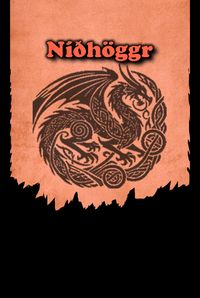
Níðhöggr is the fearsome dragon who gnaws at the roots of Yggdrasil, the World Tree, in Norse mythology. A creature of chaos and destruction, he embodies the forces of decay that threaten the balance of the cosmos. Níðhöggr lives in the dark, icy realm of Niflheim, feeding on the corpses of the dead and representing the eternal cycle of life and death. His actions, constantly weakening Yggdrasil, signify the looming destruction that will unfold during Ragnarok, when he will emerge to bring further devastation. Despite his destructive role, Níðhöggr is an essential part of the cosmic order, reminding us of the inevitability of decay and the transformative power of destruction in the universe.
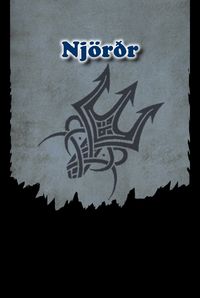
Njörðr is a Vanir god of the sea, wind, and wealth, often associated with safe voyages and prosperity. Unlike the warlike Æsir, Njörðr represents peace and abundance, ensuring that fishermen and traders thrive. He was married to the giantess Skadi, but their union was doomed, as he loved the sea while she longed for the mountains. His children, Freyr and Freya, inherited his divine grace and played significant roles in Norse mythology. Though not as well-known as Odin or Thor, Njörðr’s influence was deeply felt among those who depended on the ocean for survival.
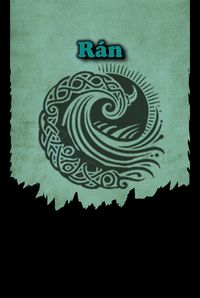
Rán is the mysterious and fearsome goddess of the sea, known for capturing sailors in her vast net and dragging them to the depths. She is both revered and feared, embodying the unpredictable and unforgiving nature of the ocean. Those who drowned were said to go to her underwater hall, where they found a different kind of afterlife beneath the waves. Sailors would often offer gold to Rán, hoping to appease her and ensure a safe voyage. She represents the dual nature of the sea—both a source of life and an inescapable force of destruction.
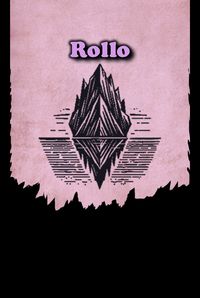
Rollo is a historical Viking leader who became the first ruler of Normandy, bridging the world of Norse raiders and European nobility. Though not a god, his legendary status places him among the greatest figures in Viking history. Originally a fearsome warrior, he agreed to defend France’s shores in exchange for land, laying the foundation for a powerful dynasty. He is often depicted as ambitious, pragmatic, and unrelenting, a true embodiment of Viking resilience. His story shows that even the most feared raiders could become kings, adapting to new lands while holding onto their warrior spirit.
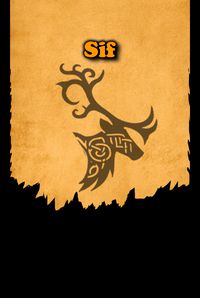
Sif is the golden-haired goddess of fertility, family, and the harvest, known for her beauty and her flowing, golden locks. She is the wife of Thor and is often associated with the bounty of the earth, as her hair symbolizes golden wheat fields that sustain life. Her most famous myth involves Loki cutting off her hair as a cruel prank, which led Thor to force him to replace it with strands of magically forged gold crafted by the dwarves. This act not only restored Sif’s beauty but also reinforced her connection to the land’s abundance and renewal. Though she does not play a major role in many myths, her presence signifies the importance of prosperity, stability, and the cycles of nature in Norse life.
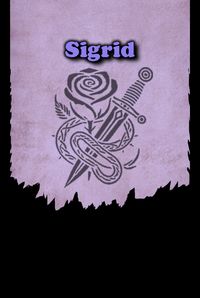
Sigrid, often called Sigrid the Proud, was a legendary queen known for her defiance and independence. When suitors sought her hand in marriage, she burned those who insulted her, proving she would not be controlled. She eventually married Sweyn Forkbeard, becoming a powerful political figure who shaped the future of Scandinavian rule. Her name has become synonymous with strength, cunning, and the ability to command respect in a world dominated by warriors. Sigrid’s legacy is a testament to the power of Viking women, who were not merely consorts but rulers in their own right.
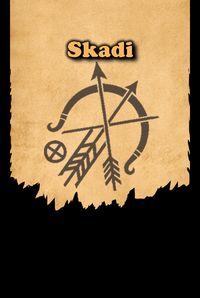
Skaði is a fierce and independent giantess associated with winter, hunting, and the mountains. She sought revenge against the gods for the death of her father but was instead offered a marriage to one of the Æsir as compensation. Choosing Njörðr, she quickly realized they were incompatible—she loved the cold peaks, while he longed for the sea. Ultimately, she left him and returned to the mountains, where she roamed freely, embodying the harsh beauty of winter. Skaði represents resilience, the untamed wilderness, and the power of those who refuse to be bound by the expectations of others.
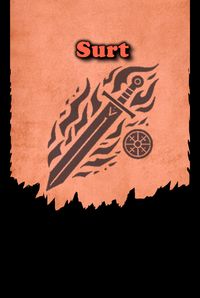
Surt is the fire giant who will set the world ablaze at Ragnarok, wielding a flaming sword that outshines the sun. He is the ruler of Muspelheim, the realm of fire, and has long awaited his moment to march against the gods. When the end comes, he will lead the giants into battle, ultimately burning Asgard to the ground. Though he is a force of destruction, he is also part of the cosmic cycle, ensuring that from the ashes, a new world can rise. Surt is the embodiment of fire’s dual nature—both a destroyer and a catalyst for rebirth.
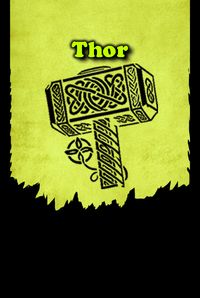
Thor, the god of thunder, strength, and protection, is one of the most famous figures in Norse mythology. Wielding his mighty hammer Mjölnir, he defends Asgard and Midgard from giants and monsters, ensuring the safety of gods and mortals alike. Despite his brute strength, Thor is also deeply honorable, valuing loyalty and justice above all else. His greatest foe is Jörmungandr, and their destined battle at Ragnarok will see both perish in an earth-shattering clash. Thor embodies the ideal warrior, fearless in the face of doom, standing against chaos until his final breath.
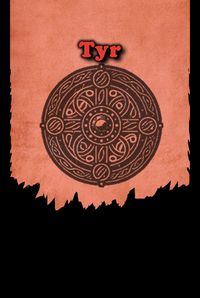
Týr is the god of war, law, and sacrifice, known for his unwavering sense of justice. He is best remembered for the moment he placed his hand in Fenrir’s mouth as a sign of trust while the gods bound the great wolf—knowing full well that Fenrir would bite it off. Unlike Thor, who represents raw power, Týr symbolizes the courage to do what is right, even at great personal cost. Though his influence waned over time, his legacy as a god of law and honor remained strong. In Ragnarok, he will face the monstrous hound Garmr, where they will slay each other in battle.
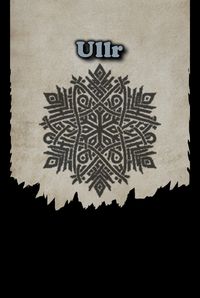
Ullr is the god of winter, hunting, and archery, often depicted as a skilled warrior who thrives in the cold. He is a master skier, gliding across frozen landscapes faster than any mortal, making him a patron of hunters and travelers. While little is known of his myths, his name was invoked for protection during harsh winters, and he was considered a god of duels and oaths. Ullr’s domain over survival in harsh conditions made him an essential figure in Viking life. He represents the endurance and skill needed to conquer the elements, a silent guardian of those who brave the frozen wilds.
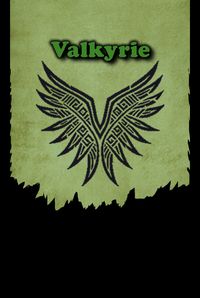
The Valkyries are fierce warrior maidens who serve Odin, choosing which fallen warriors are worthy of Valhalla. Clad in armor and riding winged horses, they descend upon battlefields to gather the bravest souls. They are not only warriors but also mystical figures, guiding fate and ensuring the cycle of battle continues. Some legends suggest that they could fall in love with mortals, but their duty to the gods always came first. As the handmaidens of war, the Valkyries represent both the glory and the tragedy of battle, ensuring that the greatest warriors live on beyond death.
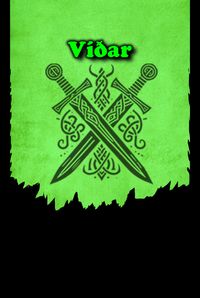
Víðar is the silent god of vengeance, fated to avenge Odin’s death during Ragnarok. He is known for his incredible strength and his enchanted shoe, made from the scraps of all leather cuttings, which allows him to withstand Fenrir’s bite. When the great wolf swallows Odin, Víðar will step forward, prying Fenrir’s jaws apart and slaying the beast in a moment of divine retribution. Though he speaks little in the myths, his presence is one of quiet resolve, embodying patience and inevitable justice. After Ragnarok, he will be one of the few gods to survive, playing a role in rebuilding the new world.
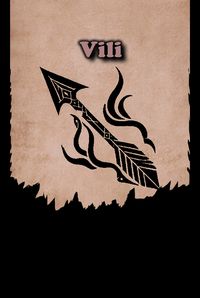
Vili is one of the three brothers—alongside Odin and Vé—who played a pivotal role in Norse creation myths. Together, they slew the primordial giant Ymir and used his body to craft the world, bringing order from chaos. Vili is associated with willpower, intelligence, and thought, symbolizing the strength of mind necessary to shape destiny. It was Vili, along with Vé, who granted the first humans, Ask and Embla, their defining traits—giving them understanding and emotion. Though overshadowed by Odin’s prominence, Vili remains an essential figure in the foundation of the cosmos, representing the conscious force that transforms the world.
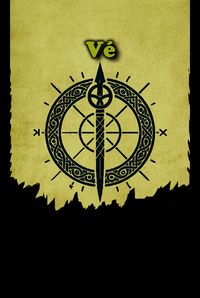
Vé is one of the three primordial gods, alongside his brothers Odin and Vili, who played a crucial role in shaping the cosmos. Together, they slew the primordial giant Ymir, using his body to create the world—his flesh became the land, his blood the seas, and his bones the mountains. Vé is associated with sacred rites, speech, and the power of naming, giving structure to the world through language and ritual. Though he is less well-known than Odin, his influence is woven into the foundation of existence itself, ensuring order in the universe. Some myths suggest that while Odin was away, Vé and Vili may have even taken his place—both in ruling and, controversially, in sharing his wife, Frigg.
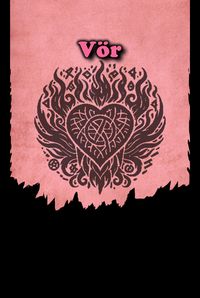
Vör is the goddess of wisdom and truth, known for her ability to see through lies and deception. She is often invoked by those seeking justice, as nothing escapes her keen perception. In Norse mythology, she represents intuition and the search for hidden knowledge, ensuring that truth prevails over falsehood. While not as well-known as Frigg or Freya, her role in the pantheon highlights the importance of foresight and understanding. She embodies the wisdom that comes from experience, guiding those who seek clarity in a world full of uncertainty.
